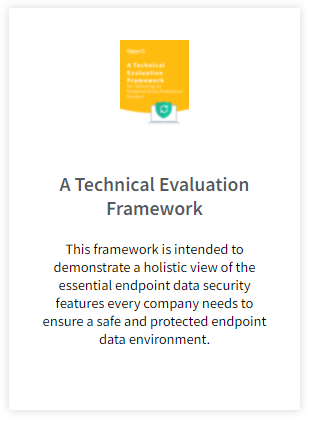The best way to protect yourself, your users and your business against ransomware is by setting up a proactive defence. The ransomware statistics paint a frightening picture for anyone in charge of IT: In Q3 2016 alone, 18 million new malware samples were captured. Source: Panda Labs What that means is that the criminals…
Cyber Security: Reducing risk with user data backup
Introduction: Cyber security threats and endpoint backup
The cyber threat landscape has matured significantly over the past 10 years, due in part to the proliferation of new technologies and an increasing reliance on the Internet for personal and business needs. Not only are Governments looking for ways to improve the security of their critical infrastructure systems, enterprises have become increasingly aware of the obvious real threat of data security breaches.
The recently released MessageLabs Intelligence 2010 Annual Security report highlights the fact that the 2010 cyber security landscape was “shaped by the technological advances made in more sophisticated forms of malware as the cyber criminals continued to find new and innovative ways to attack computers and businesses”.
Risk management and improved security ecosystems are high priorities for IT, the 2010 CDW Security2 Straw Poll has illustrated not only the increasing focus on data security in enterprises, but how business data loss is seen as the number one cyber security threat challenge. The majority of organizations have dedicated IT security support in place, but nearly all see room for improvement in their business’ IT defences, resulting in an increased requirement for a data protection solution that addresses cyber security threats while providing tangible enterprise benefits.
The increasing mobility of workers and the resulting ‘business data spread’ has required faster security innovation and an IT mindset change- looking at enterprise data architecture from the outside inwards, instead of the inside outwards. Protecting endpoint data and recognising solutions built ‘from the ground up’ to secure user data on laptops & desktops has become a paramount enterprise imperative, with Gartner noting that endpoint user data security is one of the major problems faced by IT today.
Managing your ‘attack surface’
Increasing amounts of business data mean there’s more data than ever to scan for threats. Data is being generated at a compound rate of 60% per year. That means there’s 60% more data out every year than there was the year before.[1]
Intel’s researcher, Calloni, elaborates on this issue by discussing what he calls your business ‘attack surface’. Security is expensive, so the need to reduce an organization’s ‘attack surface’ is critical when establishing a security policy. In order to build a security policy that will protect your organization, Calloni argued that you must be able to look at what area or parts of your system/network are available for an assailant to compromise.
Five key areas that must be looked at include
- Vulnerability — to have it, an attacker must be able to access it
- Threats — any potential hazard of harm to the data, systems or environment by leveraging a vulnerability; Individual taking advantage of a vulnerability
- Risk— the probability of the threats using the vulnerabilities; higher risks come with more vulnerabilities and increased threats
- Exposure — the damage done through a threat taking advantage of a vulnerability
- Countermeasures — processes and standards that are used to combat and mitigate the vulnerability & risks[2]
Security decreases as attack surface increases, so the exponential growth of business data in an organization makes protecting data more complicated than ever before. A larger mobile workforce and the growing prevalence of enterprises using laptops as their primary system makes control over endpoint user data one of the most challenging and vital cyber security considerations.
Vulnerability is one of the most important and actionable aspects of cyber security. Reducing the vulnerability of your business data will in turn reduce the exposure and effectively manage risk.
The kind of endpoint backup user data protection solutions required to protect business critical data in the modern, mobile, world reduce this vulnerability and are endpoint device focused – developed ‘from the ground up’ to provide IT with a simple, reliable and rapid response tool to secure, backup and recover data from laptops, desktops and other devices.
What’s next?
Reducing Data Vulnerability
Download the Cibecs 30 Day Free Trial
Get effective user data protection now!
FEATURED POSTS
IT Managers: How to Protect Your Users Against Ransomware
The best way to protect yourself, your users and your business against ransomware is by setting up a proactive defence. The ransomware statistics paint a frightening picture for anyone in charge of IT: In Q3 2016 alone, 18 million new malware samples were captured. Source: Panda Labs What that means is that the criminals…
Cibecs Joins Silicon Valley Top 20
Cibecs Joins Silicon Valley Companies to be Listed on Top 20 Most Promising Storage Solution Providers Cibecs, a leading South African endpoint backup, protection and security solution, has been recognised as one of the 20 Most Promising Storage Solutions by CIO Review. The list, compiled by industry insiders, highlights leading global technology providers that offer effective…
4 Signs You Need a New Endpoint Data Backup Solution
With more workers depending on laptops it is more important than ever to ensure that the work protected and stored on those devices is backed up and protected. Forrester Research says that 45% of corporate executives don’t follow policies for data use and handling. Underlining how at risk almost half of a business’s data actually…











